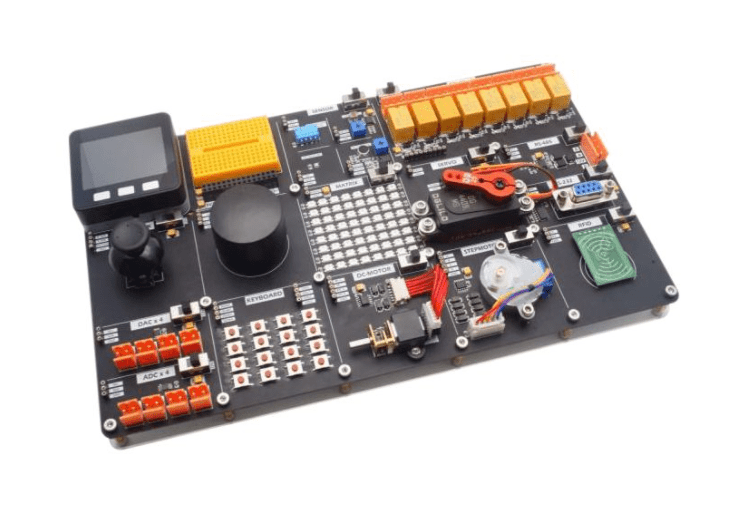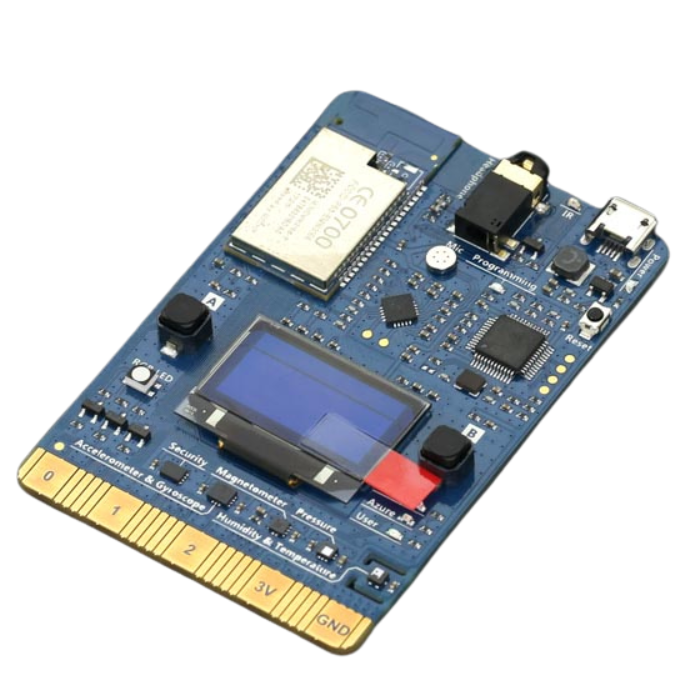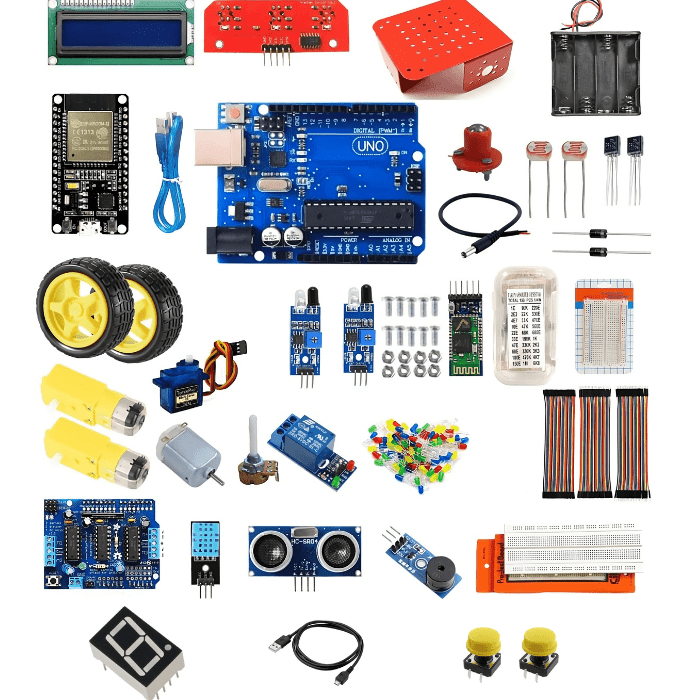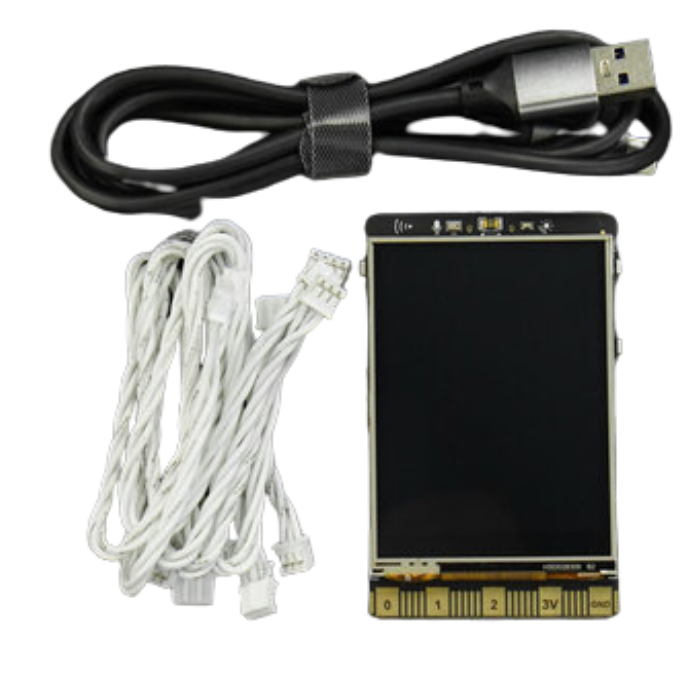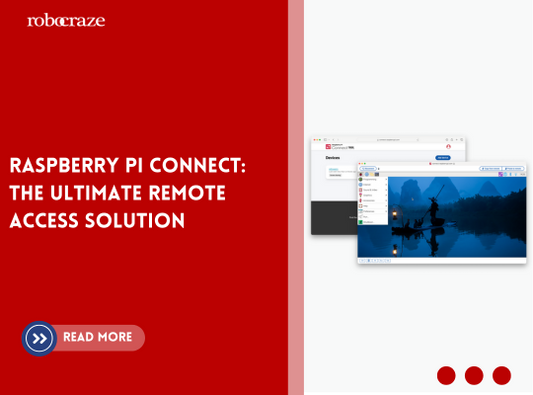Why Linux for IoT?
Linux is the top choice for IoT because it can be customized to fit different needs. Its flexible design makes it easier for developers to build IoT devices that use fewer resources.
Linux is excellent for IoT because it's designed to work well on devices with low power. Its ability to adapt to different hardware and strong security features make it a top choice for various IoT uses, from everyday gadgets to big machines and smart city systems.

What is a Linux server?
A Linux server is a computer system running on the Linux operating system. It's free, open-source, and known for its stability, security, and flexibility. Its fully open-source nature keeps setup and maintenance costs low and allows for customization.
Linux servers provide essential functionalities like user management, security enforcement, and administrative tasks through a central interface. They're popular for hosting services and applications due to their reliability and scalability.
Types Of Linux Servers
- Ubuntu: It is a Debian-based Linux OS famous for its user-friendliness and extensive community support. It offers Long Term Support (LTS) versions for extended stability.
- OpenSUSE: OpenSUSE is an open-source Linux server platform designed for developers who need stability and security. It can work on physical computers, virtual machines, and in the cloud.
- Raspbian (for Raspberry Pi): If you're using Raspberry Pi devices for your IoT deployment, Raspbian, the official operating system for Raspberry Pi, is a natural choice. It's optimized for Raspberry Pi hardware and offers a lightweight yet feature-rich environment.
- Red Hat Enterprise Linux (RHEL): RHEL is a commercial Linux distribution known for its stability, security, and comprehensive support services. It is widely used in enterprise environments, particularly for cloud computing and data center solutions.
- Debian: Debian offers a wide range of software packages and a strong system for managing them. Debian is suitable for businesses, government agencies, educational institutions, and non-profit organizations.
- CentOS: It's compatible with RHEL but doesn't require a subscription fee. Known for its stability and reliability. CentOS is widely used for various server applications.
- Fedora: Sponsored by Red Hat, serving as a testing ground for features eventually integrated into RHEL. It provides a powerful platform with features like the PostgreSQL Database Server, making it suitable for businesses and establishments requiring performance and security.

How to Setup a Linux Server for Remote Accessing IoT Devices
Establishing a Linux server for remotely accessing IoT devices is essential for efficiently managing and monitoring Internet of Things deployments. Whether you're supervising smart home devices, industrial sensors, or agricultural equipment, a properly set up Linux server provides a central hub for controlling and collecting data from your IoT network. Below are the steps to set up a Linux server for remote access IoT (Internet of Things) devices.
Step 1: Choose a Linux Server or Distribution
Choosing the appropriate Linux distribution is essential for remote IoT device access. Ubuntu Server, CentOS, Debian, OpenSUSE, RHEL, Fedora, and Raspbian (for Raspberry Pi) are popular options.
Choose the distribution that best fits your requirements in terms of familiarity, support, and compatibility with your IoT devices and applications.
Step 2: Selecting Suitable Hardware
Selecting appropriate hardware for a Linux server for remote IoT device access is crucial. Opt for a powerful CPU, RAM, and fast storage like SSDs or RAID. Ensure Gigabit Ethernet for speedy data transfer.
Choose a suitable form factor, consider redundancy features, and prioritize expansion and scalability. Look for remote management capabilities like IPMI or iDRAC and prioritize energy-efficient options.
Step 3: Install Linux distribution
To Install the Linux distribution on the server follow the installation steps outlined in the distribution's documentation.
Be sure to prioritize security by regularly applying updates and patches provided by the distribution to keep the server protected against vulnerabilities.
Step 4: Securing remote access using SSH
Securing remote access to your Linux server using SSH (Secure Shell) is crucial for safeguarding IoT devices.
To do this use SSH with key-based authentication, change the default port, and limit access through firewall rules. Employ Fail2ban for automatic IP blocking and regularly update software. Monitor SSH logs, use strong passwords, or implement 2FA for added security.
These steps protect your server and IoT infrastructure from unauthorized access and potential threats.
If SSH is not available on IoT devices, consider using protocols like MQTT or HTTP(S) with proper authentication and encryption.
Step 5: Configuring the firewall
Setting up the firewall on your Linux server is really important for security. Find out what firewall software you have like Iptables, UFW, or Firewalld, and open the ports you need for IoT services while closing the ones you don't use.
Create rules to allow or block traffic, turn on the firewall, and keep an eye on the logs for anything suspicious. This boosts the security of your server, protecting your IoT devices from threats and people who trying to access them without permission.
Step 6: Set the Static IP Address
Assigning a static IP address to your server guarantees stable network connectivity which is important for managing IoT devices without interruptions.
You can configure this in the server's network settings or use DHCP reservation on your router by linking a specific IP address with the server's MAC address.
This makes it easier to access your server and manage your network, ensuring smooth communication with your IoT devices.
Step 7: IoT Device Authentication
Making sure IoT devices are properly authenticated is super important for security. Give each device its own login details, use safe communication methods like HTTPS or MQTT with TLS/SSL, and set up authentication using tokens or certificates. Registering devices and controlling access based on their roles adds extra security.
Keep an eye on things all the time to catch any unusual activity quickly. These steps make sure your IoT system stays safe, keeping your data intact and stopping anyone from getting in without permission.
Step 8: Choose IoT Protocols and APIs
Choosing the IoT protocols and APIs are important for communication and data exchange within IoT ecosystems. IoT protocols like MQTT, CoAP, HTTP/HTTPS, and AMQP enable efficient communication, while APIs such as RESTful, GraphQL, and WebSocket facilitate interaction with IoT devices.
They offer diverse options tailored to specific requirements, ensuring interoperability and scalability in IoT solutions. Using these protocols and APIs, developers can make IoT solutions that work well together and can grow to fit different needs and situations.
Step 9: Set up Data Storage and Management
Setting up data storage and management is crucial for IoT systems. It's needed to handle and analyze all the data produced by connected devices effectively. To do this, organizations often use different types of databases.
SQL databases like MySQL and PostgreSQL handle structured data, while NoSQL databases like MongoDB and Cassandra handle unstructured data. For data that's collected over time, specialized databases called time-series databases, such as InfluxDB and Prometheus, are used.
They're great for IoT applications where data is collected over time and needs to be queried. Additionally, data lakes like Apache Hadoop and Amazon S3 offer scalable solutions for storing raw, unstructured IoT data.
Step 10: Configure Security Certificates
Configuring security certificates is essential for encrypted communication and authenticating IoT devices and servers. Generate SSL/TLS certificates from a trusted provider or using self-signed certificates.
Install them on devices and servers, configuring servers to use SSL/TLS encryption and specifying certificate locations. Optionally, implement mutual TLS authentication. Regularly renew certificates to prevent disruptions and follow best practices for management.
Step 11: Implement Monitoring and Logging
Use monitoring and logging to get real-time insights into system performance, health, and security. Set up monitoring tools to track metrics like CPU usage, network traffic, and device status, enabling proactive issue resolution. And configure logging for record events, errors, and activities for analysis and troubleshooting. Tools like Zabbix, Nagios, and ELK Stack which includes Logstash, Elasticsearch, and Kibana can be useful for Monitoring and Logging.
Step 12: Test Remote Access
To test remote access, confirm connectivity and firewall settings, then attempt SSH or remote desktop connections. Validate web interface access and VPN connections if applicable. Use ping tests to verify connectivity and conduct functional tests to ensure device operations. This ensures reliable remote management of IoT devices.
Conclusion:
Setting up a Linux server for remote accessing IoT devices is a fundamental step towards efficiently managing and monitoring IoT deployments. The choice of Linux for IoT is justified by its flexibility, scalability, and robust security features, making it an ideal platform for diverse IoT applications.
The steps outlined for setting up a Linux server provide a comprehensive guide to ensure the security, stability, and functionality of the server infrastructure. From selecting the appropriate Linux distribution to configuring security certificates and implementing monitoring and logging, each step contributes to establishing a reliable and secure environment for remote access to IoT devices.
By following these guidelines, organizations can effectively harness the potential of IoT technologies while safeguarding against unauthorized access and potential threats, thus facilitating seamless communication, data exchange, and management within IoT ecosystems.




